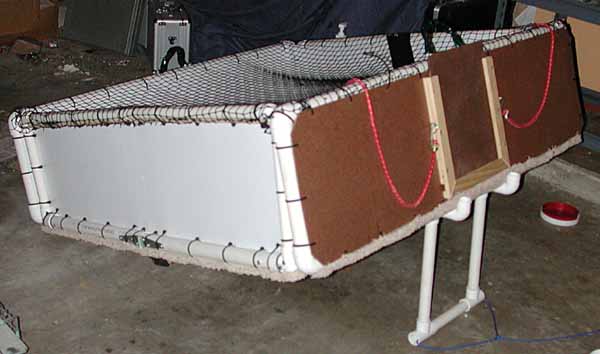We picked up the four cats yesterday and stacked their carriers in the laundry room overnight so that they would stay warm and we could keep an eye on them. The good news is that they all came through the surgery fine. The bad news is that one of the females had kittens about 5 or 6 weeks ago. They said she probably wasn’t still nursing but I let her go a bit ahead of schedule. (They say you should monitor females for 24 hours after surgery but if they’re nursing the kittens need them.) I haven’t seen the kittens yet but she will no doubt bring them to the food at some point and then we get to do this again. I hope that if we can catch them while they’re very young they can be socialized and adopted. The Humane Society has a bunch of adult cats for adoption, but kittens always go quickly.
We were also able to get one of the Humane Society’s good traps, and caught one more cat last night, which went to be fixed this morning. We re-set the trap, but only caught a possum.
The Humane Society here, and I imagine most places, has a trap/spay-neuter/release program which they say is the only proven humane way to control feral cat populations. They spay or neuter the cats, give pain medication, worm them, clean their ears, give them a flea treatment, a dose of penicillin, and a rabies shot, all for free. Quite a deal. You can have other things done for a fee. I don’t know if the vets donate their services but I’m sure they at least give them a reduced rate. I checked into having our vet spay or neuter these cats and it would have been several hundred dollars, depending on how many were females. They also “tip” the left ear (remove about 1/4″ from the eartip) — they say this is the universal sign that a feral cat has been spayed or neutered, and it’s mandatory. Then they go back to wherever they came from, and live out their lives but without increasing the population. It feels like a bit of an uphill battle (and it must seem like a mountain to the people at the Humane Society) but I’m sure it makes things better than they would be if nothing were done.


